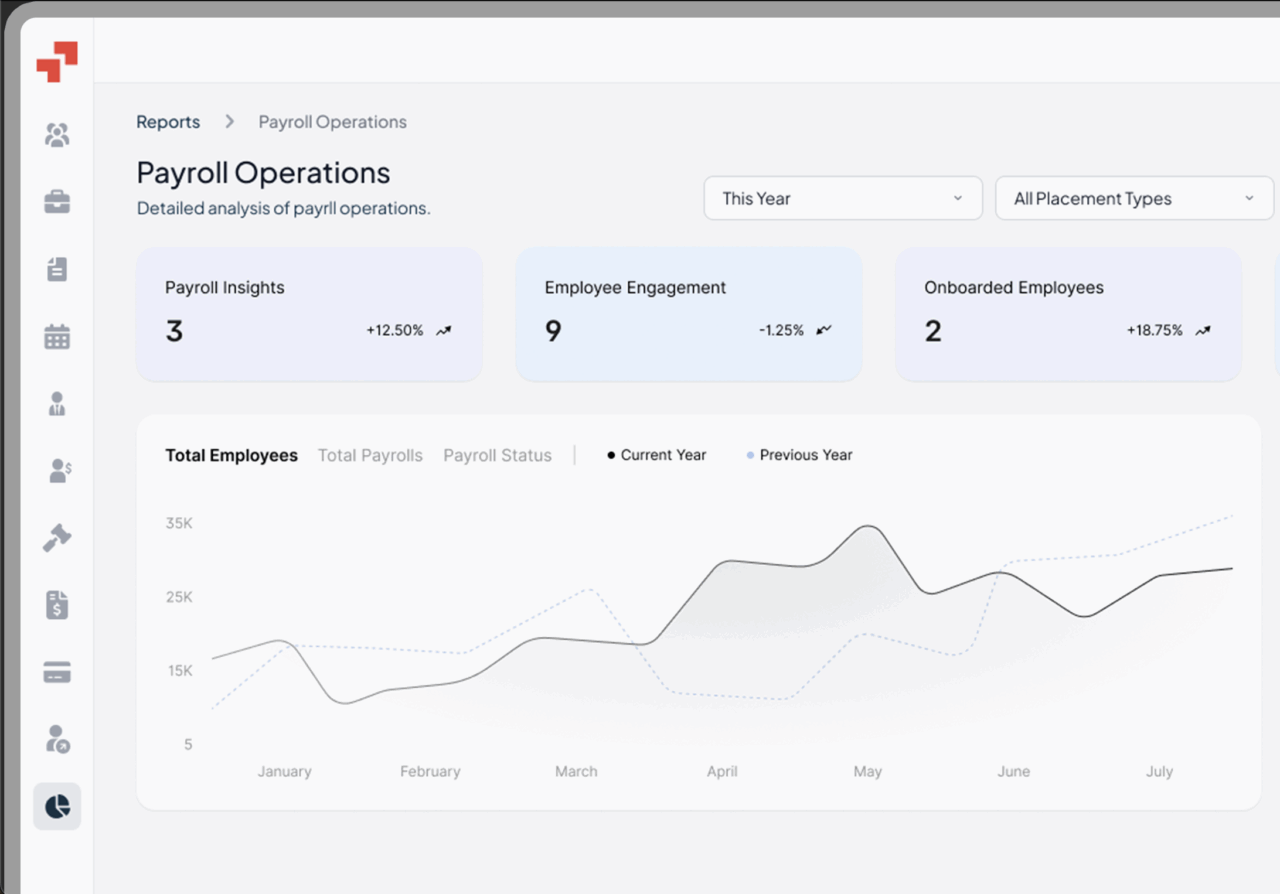Global Workforce GlossaryCompliance Report
Running a business smoothly means staying ahead of risks and regulations. A Compliance Report helps you track how well your company meets legal and internal standards, uncover potential gaps, and take action before issues escalate. For organizations expanding globally or managing remote teams, it’s a vital tool that keeps operations transparent, builds trust, and ensures your processes run without a hitch.
Table of Contents
- What is co-employment?
- What are co-employment laws?
- Why is co-employment a risk?
- What are co-employment rules
- Co-employment do’s and don’ts
- How does co-employment work?
- What is the difference between co-employment and joint employment?
- Co-employment vs PEO
- Co-employment vs employee leasing
- Is co-op considered a full-time employee?
- Is it illegal to work for two jobs in the same industry?
- Co-employment examples
- Practical Case Study Example
- PamGro and Co-employment: Your Global Partner
What is a Compliance Report?
A compliance report is a formal document that shows how an organization meets regulatory requirements, internal policies, and industry standards.
It provides evidence that the business follows legal, ethical, and operational rules. A well-prepared compliance report reassures regulators, investors, and stakeholders that the company is operating responsibly and transparently.
These reports can cover areas such as data privacy, workplace safety, financial controls, or employment laws. For global companies, compliance reporting also includes country-specific labor rules, tax requirements, and cross-border employment practices. A comprehensive compliance report reduces risk, helps build trust with regulatory bodies and stakeholders, and keeps the organization aligned with evolving regulations. It is also a valuable management tool for evaluating the effectiveness of compliance processes and ensuring accountability across departments.
How to Make a Compliance Report
To make a compliance report, start by identifying the regulatory requirements or internal policies you need to document. Collect relevant data, analyze compliance efforts, and structure the report clearly while ensuring internal controls are in place . A standard compliance reporting process often includes:
- Defining scope – which regulations or policies apply
- Data collection – gathering evidence of compliance status
- Analysis – identifying gaps or risks
- Reporting – presenting findings in a structured format
Organizations should also involve a compliance officer t use compliance management software or tools to automate data collection and ensure accuracy. Depending on the industry, reports may need to be filed quarterly, annually, or on-demand during audits. By adopting a consistent reporting framework, companies can demonstrate accountability while making regulatory interactions smoother.
What Should a Compliance Report Include?
A compliance report should include key details that regulators and internal stakeholders expect. Standard elements are:
- Executive summary – overview of compliance status
- Scope and objectives – what areas were evaluated
- Methodology – how data was collected and analyzed
- Findings – evidence of compliance, violations, or risks
- Corrective actions – plans to resolve issues
- Sign-offs – authorized approvals
For example, a data privacy compliance report might document how personal information is collected, processed, and secured under GDPR. A workplace compliance report could include training completion rates and incident logs. Including visuals like charts or dashboards makes it easier to digest complex data. Importantly, reports should remain factual, transparent, and supported by verifiable documentation.
How Does a Regulatory Compliance Report Help Businesses?
A regulatory compliance report is a mandatory document submitted to government authorities or industry regulators. Its purpose is to prove that an organization is meeting external rules such as the General Data Protection Regulation (GDPR) in Europe, the Health Insurance Portability and Accountability Act (HIPAA) in the U.S., or the Sarbanes-Oxley Act for financial reporting, in accordance with data protection laws .
Failure to provide accurate reports can result in fines, penalties, or reputational damage. For global businesses, this type of compliance reporting is especially complex, as each country enforces unique labor, tax, and corporate governance rules. Using centralized systems and local expertise ensures organizations meet every regulatory obligation.
What Is the Purpose of a Compliance Report?
The main purpose of a compliance report is to document accountability and demonstrate that the company is effectively implementing its compliance program while meeting its legal and ethical responsibilities. It helps organizations:
- Prove compliance to regulators
- Build trust with stakeholders
- Identify gaps in compliance processes
- Protect the company from legal or financial risks
Beyond regulatory needs, these reports also guide leadership in decision-making. For example, if a compliance report reveals recurring data privacy issues, management can allocate resources to strengthen security systems. In this way, compliance reporting is both a defensive and proactive business strategy.
What Are the Benefits of Compliance Reporting?
Compliance reporting brings several benefits, emphasizing that it should be viewed as an ongoing process :
- Risk reduction – minimizes penalties and lawsuits
- Operational efficiency – standardizes processes across departments
- Transparency – builds investor and customer confidence
- Improved governance – supports internal monitoring and accountability
- Competitive edge – organizations known for strong compliance attract more partnerships
For global employers, the benefits multiply. Regular compliance reports highlight alignment with labor laws, immigration requirements, and tax obligations across multiple countries. This reassures relevant stakeholders, including investors, employees, and regulators, that the company is responsible and trustworthy. Effective compliance reporting ultimately safeguards long-term business sustainability.
Compliance Report vs. Audit Report: How Do They Differ?
Although compliance reports and audit reports are related, they serve different purposes. A compliance report shows how a company adheres to laws and policies, while an audit report provides an independent evaluation of financial records, operations, or controls.
Audit reports are often performed by external auditors and are highly standardized, whereas compliance reports can be internal or external, depending on the regulatory requirement. In practice, a compliance report may be reviewed during an audit, making both documents complementary. Understanding this distinction helps businesses prepare more effectively for external reviews and avoid unnecessary duplication of effort.
Regulatory Compliance Reporting vs. Internal Compliance Reporting (
Regulatory compliance reporting focuses on mandatory submissions to government authorities or industry regulators, ensuring the business complies with external laws. Examples include tax filings, environmental impact reports, and employee safety compliance.
Internal compliance reporting, on the other hand, is voluntary and aimed at internal governance. It might include ethics compliance, training records, or internal policy adherence. While not always required by law, internal reports help strengthen culture and prevent risks before they escalate.
Organizations that balance both regulatory and internal compliance reporting have stronger defenses against penalties and reputational damage. This dual approach creates a culture of accountability and continuous improvement.
How to Manage Compliance Reporting?
Managing compliance reporting requires a structured approach. Best practices include:
- Centralizing data collection to reduce errors
- Using compliance management tools for automation
- Defining ownership – assigning responsible teams or officers
- Regular reviews – updating reports as regulations evolve
- Employee training – ensuring staff understand reporting obligations
Global companies often face the added complexity of tracking multiple jurisdictions. Partnering with compliance experts or using Employer of Record (EOR) services simplifies reporting obligations by consolidating local rules into one framework. A strong management process turns compliance from a burden into a strategic advantage
What is a Compliance Report Used For?
A compliance report is used for various business purposes:
- Regulatory filing – proving adherence to laws
- Internal monitoring – tracking compliance status across departments
- Stakeholder communication – assuring investors, partners, and customers
- Audit preparation – serving as supporting evidence
For example, banks use compliance reports to prove adherence to anti-money laundering (AML) laws, while tech companies use them to document GDPR compliance. In every case, the report becomes a safeguard against penalties and a tool for improving governance.
Why Is Compliance Reporting Important?
Compliance reporting is important because it protects organizations from legal penalties, reputational harm, and operational risks. In today’s environment of increasing regulations, regulators demand proof of compliance, not just verbal assurance.
For global companies, compliance reporting also ensures smooth Global expansion. Without proper documentation of compliance obligations , businesses may face fines, hiring restrictions, or even suspension of operations in certain countries. Consistent reporting demonstrates accountability and creates trust, making compliance a core element of sustainable growth.
Example of Compliance Report
Imagine a U.S.-based SaaS company expanding into Europe. The company must comply with GDPR rules for data privacy. A compliance report would include:
- Data collection practices (customer sign-ups, analytics)
- Security measures (encryption, access controls)
- Consent management systems
- Breach response protocols
- Training completion rates for employees handling data
This report would then be shared with regulators or internal leadership to confirm GDPR compliance. By preparing such a detailed document, the company avoids fines, maintains customer trust, and strengthens its global reputation.
Practical Case Study on Compliance Report
A fast-growing fintech startup in the U.S. planned to expand into Germany and Singapore. Each country had unique compliance requirements: GDPR in the EU for data privacy and strict financial reporting rules in Singapore. The leadership team realized that preparing compliance reports across multiple jurisdictions was overwhelming.
They implemented a structured compliance reporting process with the help of local experts. Reports included financial audits, employee labor compliance, and data privacy reports. This proactive approach reduced regulatory risks and allowed the startup to scale faster. Investors viewed the company more favorably, knowing that compliance risks were managed.
The result: within 18 months, the startup expanded successfully, attracted global investors, and avoided costly fines that could have delayed growth. This example shows how compliance reporting can directly support international expansion and business credibility.
PamGro: Simplifying Global Hiring and Management
Expanding globally comes with complex compliance reporting obligations — from labor laws and payroll taxes to data privacy and employee benefits. PamGro simplifies this process. As a leading Employer of Record (EOR), we manage compliance reporting across jurisdictions so you can focus on growth.
Our team ensures your business meets every legal requirement — without the cost of setting up entities in foreign countries. Whether it’s documenting data privacy compliance, labor regulations, or cross-border tax obligations, PamGro provides a single, reliable framework for global compliance management.
👉 If you’re looking to expand into new markets without the compliance headaches, PamGro can help you stay compliant, agile, and competitive.
Talk to PamGro today to see how effortless managing international teams can be.
Hire the Best Talent, Anywhere






